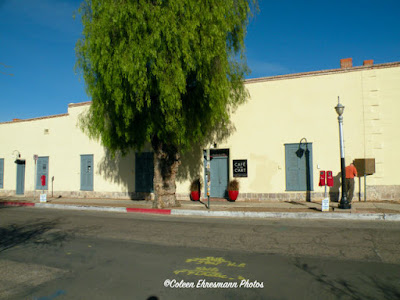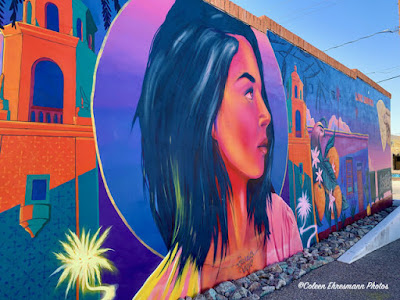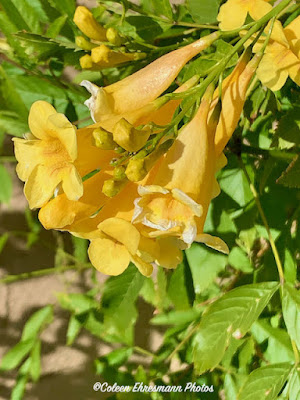Another of our Tucson tours through geocaching took us to some of the historical buildings still standing. This one, The Stork's Nest is by far my favorite because of its history.
We are retired educators enjoying the next phase in our lives. Traveling, geocaching and time with family and friends are how we spend our retirement days. We are enjoying the adventures of life after our working years.
Tuesday, January 19, 2021
The Stork's Nest and other Historical Buildings
Saturday, January 16, 2021
One Stop~Three Historical Landmarks
While geocaching in old town Tucson last week, we stopped to explore a historical landmark and found the location had three significant incidents to the history of Tucson.
This little building was the divider for two historical landmarks. The one on the south side of the building had to do with water and the one on the north side a shrine.EL OJITO SPRING OR LITTLE EYE SPRING
- -At one time, the source of water for Tucson residents was El Ojito Spring; it is no longer there. The spring slipped beneath the earth, diverted by an earthquake in 1887 and eventually drained by the ever-increasing population of Tucson.
- -For many years, the spring gave a year-round supply of water. It supplied the soldiers in the presidio with water before wells were dug within the fort.
- -Guards were posted to protect the people from the Apaches when they were gathering water and washing clothes at both the El Ojito Springs and the Santa Cruz River.
- -An Irishman, Martin Toughey, made a business of delivering water in canvas bags, that he tied to his burros, to the residents of Tucson for a penny a gallon; later two other enterprising fellows used a two-wheeled cart for delivery and sold the water for 5 cents a bucket.
- -In the late 1800s, “Simpson Baths” took the water from the spring, heated it and provided a bathing opportunity for the men of Tucson. All social levels of men, rich and poor, frequented the baths, conducting business while soaking in the metal tubs. Women were not allowed to bathe there; they had to haul water to their homes and heat it themselves.
- -The public bathhouses (with zinc or tin tubs) cost 25 cents for a weekly bath; water was considered far too important to use for bathing more than once a week.
- -In 1873, Hiram Stevens erected the first windmill to pump water from the wells. Windmills were soon erected throughout the town. (More about Hiram Stevens later.)
- -In the 1880s, W.C. Davis installed Tucson’s first personal bathtub in a Congress Street home.
- ~ Arizona Historical Society

Wednesday, January 13, 2021
The Southern Pacific
Hubby and I went to the downtown area of Old Tucson on our camping and caching adventure last week. One of our stops was at the train station. When we stopped in the morning, Hubby did not want me to talk to the railroad clerk when we realized we could not reach the backside of the train station due to Covid-19 restrictions. When I went inside there were areas roped off clearly indicating no trespassing.
So we went on our way looking for other historical landmarks, but I really wanted to go back to the train station. The second time I went inside, I told the clerk we were geocachers and really needed to get to the backside of the train station. She asked how many were "we?" I told her just my husband and myself. She told me we could go on through the door of the waiting room, but "she saw nothing and no-one." We thanked her and went about finding the needed info for the two geocaches. (I was willing to ask because another geocacher shared how a kind Amtrak clerk allowed her and her husband access to the geocaching information at the back of the station.)
The SPRR building is very large and was built in 1907. "The original station, built in 1880, was a large wooden structure with offices, freight and passenger accommodations."
This must have been the control center for the passenger and freight trains coming and going from the Tucson station.
This is looking at the southern 'half' of the backside of the station. Passengers must have used this main back door when arriving and departing. I love how the old barrels marked where we could and could not wander.
Friday, January 8, 2021
Where Was I on January 6th?
One of the writing prompts I use in the writing your life story classes I mentor is the question : Where were you the day John F. Kennedy was shot? What do you remember? What were you wearing? Eating? Who were you with? The idea for the prompt is to explain how a tragic event often leaves more of an impact in our memory bank, although sometimes that memory is buried farther back in our memory filing cabinets. For example, I vividly recall what I wore to school that day and what was served for school lunch.
Another example would be the day the Space Ship Challenger exploded and the teacher on board, Christa McAuliffe, died along with the other six crew members.
Or 9/11. I distinctly remember the student who charged into the classroom that morning sharing the news I was not aware was happening to our country. We turned on the TV and watched the news because no lesson plan learning was going to take place that morning.
I do not remember my feelings beyond disbelief on any of those occasions other than the Challenger explosion. I was driving between schools and upon hearing the news on the radio, pulled over to the side of the road and cried.
So where was I on January 6th when the Capitol building was under attack by American citizens?
Thursday, January 7, 2021
Desert Garden
We spent a day geocaching in the Scottsdale area.


























































